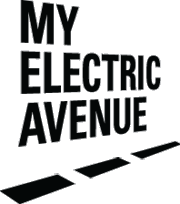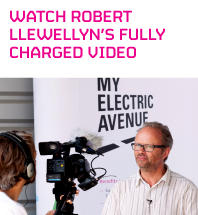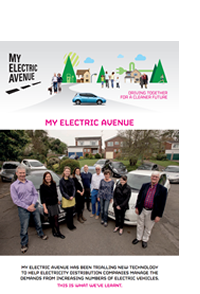How local electricity networks can cope with charging clusters of electric vehicles - My Electric Avenue’s final results reveal all…
• Across Britain 32% of local electricity networks (312,000 circuits) will require intervention when 40% - 70% of customers have EVs
• New technology could reduce the cost by around £2.2 billion up to 2050
My Electric Avenue is a three-year Ofgem-funded project that has been carrying out trials to discover the impact that charging clusters of electric vehicles (EVs) might have on local electricity networks at peak times. As sales of plug-in cars continue to rise, and as EVs gain ever-larger battery capacities, the trial results show that collaborative action will be needed by the energy and automotive industries to support the growing demand for EV charging in some areas of the UK, and that some of the smart solutions that the industry is developing can help.
My Electric Avenue has been hosted by Scottish and Southern Energy Power Distribution and led by EA Technology. It has been funded through Ofgem’s Low Carbon Networks Fund, with in-kind contribution from key partners. The project has analysed the various kinds of low voltage networks in the UK and four types are expected to experience issues due to the uptake of EVs at differing penetration levels.
By recruiting clusters of neighbours around the country who drove Nissan LEAF electric cars for 18 months, the project teams aimed to mimic a future scenario where many people in an area choose to use a pure electric vehicle or plug-in hybrid electric vehicle (PHEV).
The results, which come at a time when sales of plug-in cars have increased by 716% over the past two years, show that across Britain 32% of low voltage (LV) feeders (312,000 circuits) will require intervention when 40% - 70% of customers have EVs, based on 3.5 kW (16 amp) charging. Susceptible networks are typically characterised by available capacity of less than 1.5 kW per customer.
Traditionally, these findings would mean the replacement of underground cables in the public highway, however My Electric Avenue has been trialling a lower cost solution to this in the form of ‘Esprit’. Esprit is an innovative piece of technology that can control the charging of EVs if the local electricity grid reaches a certain level of demand. By incorporating Esprit into networks, the project is the first real-life trial that has directly controlled domestic EV charging to prevent underground cables, overhead lines and substations being potentially overloaded.
Forecasts suggest that Esprit could save around £2.2 billion of reinforcement costs up to 2050. However, for this solution to work, car manufacturers and the energy industry will need to work together more closely.
My Electric Avenue is now coming to an end and it is disseminating its findings so that energy companies, car manufacturers and others can learn from the project.
For a summary see the Trial results page
For more detail see the Project library
The Project library includes:
The anonymised data generated by the Project can be accessed here: Download the My Electric Avenue Data.
My Electric Avenue is the public identity for the Low Carbon Networks Fund Tier 2 project called 'I2EV'.
An 18 page report summarising the outputs of the My Electric Avenue Project.
The My Electric Avenue Project was delivered between January 2013 and December 2015 by EA Technology on behalf of Scottish and Southern Energy Networks (SSEN) as part of the Low Carbon Networks (LCN) Fund suite of innovation projects. As the Project is now complete, this webpage will no longer be updated, however you can learn more about the work undertaken by EA Technology at www.eatechnology.com and SSEN at www.ssepd.co.uk/Home.
For details of My Electric Avenue's legacy iniatives, visit the webpages for the Smart EV Project and the EV Network Group












